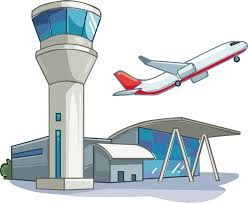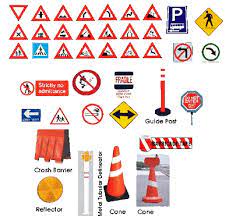Traffic management is a crucial aspect of urban planning and development. With the rapid growth of cities and increasing traffic congestion, it has become imperative to implement effective traffic management solutions. These solutions aim to improve the flow of traffic, reduce congestion, and enhance safety for both drivers and pedestrians.
One of the most promising traffic management solutions is Intelligent Transportation Systems (ITS). ITS is a combination of advanced technologies such as sensors, cameras, and communication systems that work together to manage and optimize traffic flow. By using real-time data analysis, ITS can predict traffic patterns and adjust signal timings accordingly. This helps to reduce congestion and improve travel times for commuters.
Another effective solution for managing traffic is the use of smart parking systems. These systems use sensors to detect available parking spots in real-time, allowing drivers to find parking quickly and easily. This reduces the time spent searching for parking spaces, which in turn reduces congestion on roads.
In addition to these technological solutions, there are also several policy-based approaches that can be implemented to manage traffic effectively. One such approach is road pricing, where drivers are charged a fee based on their usage of roads during peak hours. This encourages people to use public transport or carpooling options instead of driving alone during rush hour.
Another policy-based approach is the implementation of car-free zones in city centers. These zones restrict access to private vehicles within certain areas, making it safer for pedestrians and cyclists while reducing emissions from vehicles.
Furthermore, community engagement plays a vital role in managing traffic effectively. It is important to involve communities in decision-making processes related to transportation planning. By seeking feedback from local residents on issues such as pedestrian safety or bike lanes, city planners can better understand the needs of their communities and implement solutions that work for everyone.
In conclusion, managing traffic in cities requires a multi-faceted approach that combines technological solutions with policy-based approaches and community engagement. By implementing effective traffic management strategies, we can create safer, more efficient, and more sustainable urban environments for everyone.
7 Effective Traffic Management Solutions for a Better Commuting Experience
- Invest in public transport infrastructure and services
- Implement congestion charging
- Introduce carpool lanes
- Improve road infrastructure
- Introduce bike-friendly policies
- Improve signage
- Educate drivers about safe driving practices
Invest in public transport infrastructure and services
Investing in public transport infrastructure and services is a crucial aspect of traffic management in cities. By providing affordable, reliable, and efficient public transport options, we can encourage people to use public transport instead of driving alone.
One of the primary benefits of investing in public transport is that it reduces congestion on roads. When more people use public transport, there are fewer cars on the road, which means less traffic and shorter travel times for commuters. This also leads to a reduction in air pollution and greenhouse gas emissions from vehicles.
Moreover, investing in public transport can have positive social and economic impacts. It provides access to job opportunities for people who might not be able to afford private transport or live too far away from their workplaces. It also boosts local economies by connecting people with businesses and services.
In addition to traditional modes of public transportation such as buses and trains, there are also newer options such as ride-sharing services and bike-sharing programs. These options provide flexibility and convenience for users while reducing the number of cars on the road.
However, investing in public transport infrastructure and services requires significant funding from governments and private investors. Therefore, it is essential to prioritize this investment based on the needs of local communities.
In conclusion, investing in public transport infrastructure and services is a critical step towards managing traffic effectively in cities. By providing accessible, affordable, and reliable options for commuters, we can reduce congestion on roads while promoting social inclusion and economic growth.
Implement congestion charging
Congestion charging is a policy-based solution that has been implemented in several cities around the world to manage traffic effectively. The concept behind congestion charging is simple: drivers are charged a fee for entering certain areas during peak hours. This fee encourages people to use public transport or carpooling options instead of driving alone during rush hour.
One of the most successful examples of congestion charging is London’s Congestion Charge Zone. In 2003, London became the first city in the world to introduce a congestion charge. The scheme covers an area of 21 square kilometers in central London and operates between 7 am and 10 pm on weekdays. Drivers are required to pay a daily fee of £15 if they enter the zone during these hours.
The results of London’s congestion charging scheme have been impressive. Traffic volumes have reduced by around 30%, and journey times have improved by up to 25% in some areas. The scheme has also helped to reduce emissions from vehicles, which has had a positive impact on air quality in central London.
Congestion charging is not without its challenges, however. One concern is that it may disproportionately affect low-income households who cannot afford to pay the daily charge. To address this issue, some cities have introduced exemptions or discounts for low-income residents or those with disabilities.
Another concern is that congestion charging may lead to increased traffic volumes on roads outside the charging zone as drivers seek alternative routes. To mitigate this issue, it is important to implement complementary measures such as improving public transport options and encouraging cycling and walking.
In conclusion, implementing congestion charging can be an effective way to manage traffic in cities. By encouraging people to use alternative modes of transport or travel outside peak hours, we can reduce congestion, improve air quality, and create more livable urban environments for everyone. However, it is important to address concerns about equity and ensure that complementary measures are put in place alongside congestion charging schemes.
Introduce carpool lanes
Carpool lanes, also known as High Occupancy Vehicle (HOV) lanes, are an effective traffic management solution that can help reduce congestion on busy roads. These lanes are reserved for vehicles carrying multiple passengers, such as carpoolers or buses, and are designed to encourage people to share rides and reduce the number of single-occupancy vehicles on the road.
Introducing carpool lanes can have several benefits. Firstly, they can help reduce traffic congestion during peak hours by encouraging more people to share rides. This can result in faster travel times and reduced emissions from vehicles idling in traffic. Secondly, carpool lanes can also encourage people to use public transport options such as buses or trains, which can further reduce traffic congestion and emissions.
However, it is important to note that the success of carpool lanes depends on their proper implementation and enforcement. Proper signage and lane markings must be put in place to clearly indicate where the carpool lane begins and ends. Additionally, strict enforcement measures must be taken to ensure that only vehicles with multiple passengers use these lanes.
In conclusion, introducing carpool lanes is a simple yet effective traffic management solution that can help reduce congestion on busy roads. By encouraging more people to share rides or use public transport options during peak hours, we can create a more sustainable and efficient transportation system for everyone.
Improve road infrastructure
Improving road infrastructure is a crucial step towards effective traffic management. Good roads are essential for ensuring smooth traffic flow and reducing congestion. Poor road conditions can lead to accidents, delays, and increased travel times, which can have a significant impact on commuters’ daily lives.
One way to improve road infrastructure is by investing in road maintenance and repair. This includes regular resurfacing, filling potholes, and repairing damaged roads. Proper maintenance ensures that roads are safe and smooth for drivers, reducing the risk of accidents and improving travel times.
Another important aspect of improving road infrastructure is the construction of new roads or widening existing ones. This helps to reduce congestion by providing more lanes for vehicles to travel on. Additionally, building new roads or bypasses can divert traffic away from congested areas, further reducing congestion and improving traffic flow.
In addition to these measures, it is also important to invest in smart technologies such as intelligent traffic management systems. These systems use real-time data analysis to optimize traffic flow by adjusting signal timings based on current traffic conditions. They also provide information to drivers about alternative routes or travel times, helping them make informed decisions about their commute.
Overall, improving road infrastructure is an essential step towards effective traffic management. By investing in road maintenance and repair, building new roads or bypasses, and implementing smart technologies, we can create safer, more efficient, and more sustainable urban environments for everyone.
Introduce bike-friendly policies
Introducing bike-friendly policies is a smart and effective way to manage traffic in cities. By encouraging people to cycle instead of drive, we can reduce the number of cars on the road, ease congestion, and improve air quality.
One way to introduce bike-friendly policies is by creating dedicated bike lanes on roads. This allows cyclists to travel safely and efficiently without having to compete with cars for space. It also encourages people who may have been hesitant to cycle before due to safety concerns to take up cycling as a viable mode of transportation.
Another way to promote cycling is by implementing bike-sharing programs. These programs allow people to rent bicycles for short periods of time, making it easy for them to cycle around the city without having to own their own bikes. This reduces the need for people to drive short distances and helps reduce traffic congestion.
In addition, cities can also provide incentives for companies that encourage their employees to cycle instead of drive. For example, companies can offer employees access to shower facilities or secure bike parking spaces, making it easier for them to commute by bicycle.
Overall, introducing bike-friendly policies is an effective solution for managing traffic in cities. By promoting cycling as a viable mode of transportation, we can reduce congestion on roads, improve air quality, and create healthier and more sustainable urban environments.
Improve signage
Improving signage is a simple yet effective traffic management solution that can greatly enhance safety on roads. Signage plays a crucial role in guiding drivers and pedestrians, informing them of important information such as speed limits, road conditions, and directions.
Clear and visible signage can help reduce confusion among drivers, preventing accidents and improving traffic flow. It is important to ensure that signs are placed in visible locations, with adequate lighting and legible lettering.
In addition to traditional signage, the use of digital signage can also be beneficial in managing traffic. Digital signs can display real-time information such as traffic updates or road closures, allowing drivers to make informed decisions about their routes.
Moreover, multilingual signage can be helpful in areas with diverse populations. By providing information in multiple languages, it ensures that all road users are aware of important rules and regulations.
Overall, improving signage is a cost-effective way to manage traffic effectively. By ensuring clear and visible signage on roads, we can create safer environments for all road users.
Educate drivers about safe driving practices
Educating drivers about safe driving practices is an essential aspect of traffic management solutions. By promoting safe driving habits, we can reduce the number of accidents and fatalities on our roads.
One way to educate drivers is through public awareness campaigns. These campaigns can be in the form of advertisements on billboards, television, or social media platforms. They can also include workshops and training sessions that focus on safe driving practices such as maintaining a safe distance from other vehicles, obeying traffic signals and speed limits, and avoiding distractions while driving.
Another effective way to promote safe driving habits is through driver education programs in schools. By teaching young people about road safety and responsible driving, we can create a generation of drivers who are more aware of their responsibilities on the road.
It is also important to enforce traffic laws strictly to ensure that drivers abide by them. This includes imposing fines for traffic violations such as speeding or running red lights. By enforcing these laws consistently, we can deter reckless driving behavior and encourage safer driving habits.
Finally, it is crucial to lead by example when it comes to safe driving practices. Government officials and public figures should set an example by following traffic rules themselves. This sends a powerful message to the public that everyone has a responsibility to drive safely.
In conclusion, educating drivers about safe driving practices is an important aspect of traffic management solutions. Through public awareness campaigns, driver education programs in schools, strict law enforcement, and leading by example, we can create a culture of responsible driving that promotes safety for all on our roads.




